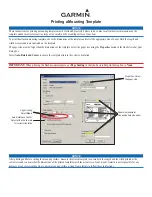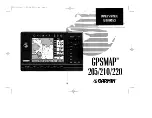
14
Miscellaneous Tips
• The receiver antennas should be kept away from any metal surfaces whenever
possible as they can reflect away or shield the incoming RF signal.
• When inserting batteries, make sure they are inserted with the correct polarity.
• Before operation, confirm that the receiver and associated transmitter are
tuned to the same frequency/channel.
• After making a receiver channel change, make sure that the corresponding
change is also made on the matching transmitter.
• Use only fresh alkaline or fully charged NiMH batteries. Do not use “general
purpose” carbon batteries. When batteries are weak, replace all of them at the
same time. Do not mix new and old batteries, or different types of batteries.
• Position the receiver so it has the least possible obstructions between it and
the transmitter. Line-of-sight is best.
• During operation, the transmitter and receiver should be as close as possible to
each other for optimal results.
• A receiver cannot receive signals from two or more transmitters
simultaneously.
• Turn the transmitter off when it is not in use. For longest life, remove the
batteries if the unit is not going to be used for a long period of time as the
transmitters draw a tiny residual current even when off in order to maintain
the programmed settings. Also, since batteries installed for a long time can
sometimes corrode and/or leak, causing damage, it is generally recommended
that batteries be removed whenever the transmitters are not being used.
• When using the MT-16A/R with guitars and basses: Scratchy noises can
sometime occur when electric guitars with dirty pots or connections are used
with a wireless system. If you hear scratchy noises, we suggest these steps to
eliminate them:
1. Make sure all guitar volume and tone pots are clean and all contacts
are solid. This is very important.
2. Solder a 47pF capacitor across the pot to ground terminal of the
guitar’s volume and tone pots — this will provide extra filtering.






































